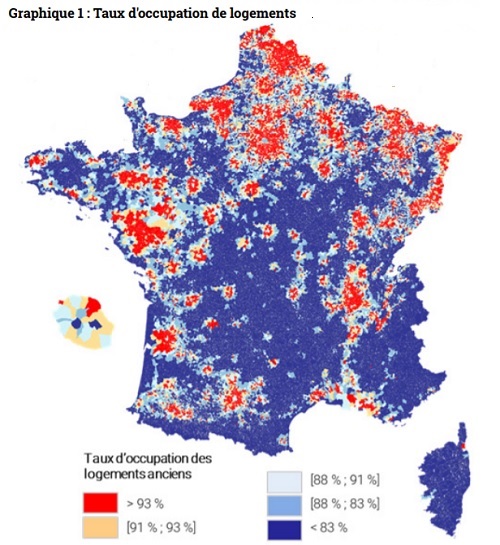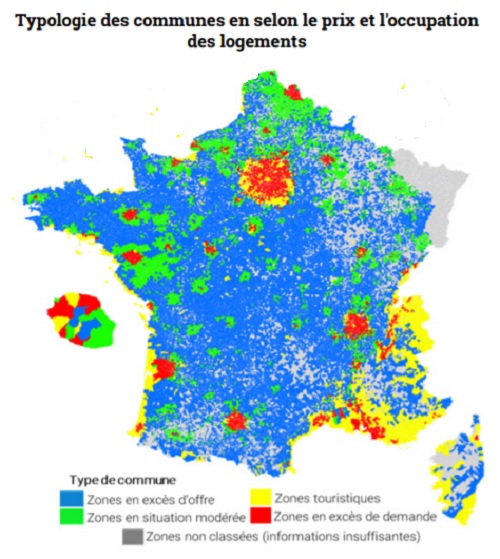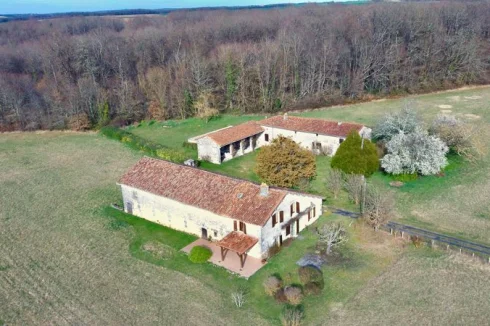France Has Too Many New Homes
Thursday 09 July 2020
In most areas of France too many new homes are being built, at the expense of the existing stock, claims a government report.
We have commented previously in these pages on the size of the housebuilding programme in France, which is one of the largest in Europe.
According to a recent study commissioned by the French government, between 2010 and 2017 new homes construction averaged 370,000 a year.
During the same period, the number of households grew by an average of 240,000 a year, arising from an increase in the population and a reduction on the size of households.
The result has been an excess of around 130,00 new homes built each year for use as a principal residence.
Over the past 20 years the new build housing programme in France has never dipped below 300,000 units a year, in some years reaching around 500,000 new homes.
It is hardly surprising therefore that the number of empty homes in France is high and growing. In 2017 2.9 million housing units were vacant, equivalent to 8.4% of the housing stock. A study in 2015 by the French national statistical office, Insee, showed that in 17% of communes over 20% of the housing stock was empty.
The number of empty homes grew on average by 3.4% per year between 2010 and 2015, a growth rate 2.5 times higher than between 1999 and 2010 and 6 times higher than between 1990 and 1999.
By way of comparison, in the UK there are around 600,000 empty homes in England (2.5% of stock), of which around 200,000 are long-term vacant.
The graphic below shows the rate of occupation of homes as a principal residence, from which it can be seen that the level of occupation in swathes of the country is under 83%. The graphic excludes occupation as a second home.

The authors consider that, often driven by the tax incentives available rather than by demand, new housebuilding has not been restricted areas of housing shortage.
In those areas where the offer exceeds supply, over the period 2010-2015 the number of households increased by 430,000, despite which 668,000 new homes were built, a surplus of over 200,000.
The authors state:
'Even in many of the areas of excess supply, new construction has been the main driver in meeting housing demand, to the detriment of older, existing homes.
The fact that new homes in these areas are cheaper than renovated older housing has played an important role in the installation choices of households.
This price gap could be explained locally by the over-abundance of building land, leading to a very low cost of land for construction, a low cost for the construction of family housing, but also by tax incentives and some historically advantageous public policies.
This dynamic is strengthened by the vacancy rate in the existing housing stock, leading to increased renovation needs, the additional cost of which has not been offset by the decrease in the price of existing housing.'
They consider that such a housing strategy is not sustainable, and that in these areas the construction of new housing should be curbed and the renovation of old housing encouraged.
The report states that only in those areas of France where the rate of occupation as a principal residence is greater than 90%, or where the area contains a large number of second homes, can a large programme of new housebuilding be justified.
As can be seen from the graphic below, a substantial area of the country is characterized by an excess supply of housing and therefore the need to curb the construction of new housing in favour of the renovation of the existing housing stock.
Areas in blue are zones where supply exceeds demand, whilst those in yellow are tourist zones, where much of the increased supply is necessary to cater for properties purchased as second homes. Only in the red zones, however, is there an excess of demand over supply.

Despite the large building programme, in many areas of high demand prices of older housing have continued to rise substantially.
The study acknowledges that:
"Municipalities with excess demand also experienced a construction rate higher than the change in the number of households. Tensions on the supply side justify a high rate of construction to adapt it to demand, but the very sharp increase in the stock and rate of vacant dwellings and second homes in these zones suggests that market failures remain, especially since the very high rate of construction is not concomitant with a fall in prices, as might be expected.'
The authors suggest that new uses, such as seasonal rentals (Airbus et al), is reducing the number of housing units available as primary residences and thus contributing to the increase in property prices.
The government have begun to recognise the need to give greater priority to the existing housing stock, notably with the 'Loi Denormandie' passed this year, under which there is relief available for the renovation of older homes in many areas of the country. However, the scheme only covers the rental market, and a separate and long-standing, recently modified, grants scheme for properties in home ownership is not generous.
In addition, the government have stemmed the use of tax incentives for new construction by reducing the zones where tax relief is available, although many areas of the country remain eligible.
Aside from the implications on the housing market, the authors express concern about the size of the new-build programme on the environment, stating :
'In France, the consumption of natural areas is higher than the European average and is growing faster than the population. Thus, the total built surface area has grown in 30 years from 20,000 km² to nearly 33,000 km². This urbanisation reduces the capacity of productive soils, increases the risk of pollution and flooding, increases greenhouse gas emissions by reducing the size of carbon sinks, and reduces biodiversity, with a variety of negative effects on society.'
Thank you for showing an interest in our News section.
Our News section is no longer being published although our catalogue of articles remains in place.
If you found our News useful, please have a look at France Insider, our subscription based News service with in-depth analysis, or our authoritative Guides to France.
If you require advice and assistance with the purchase of French property and moving to France, then take a look at the France Insider Property Clinic.





